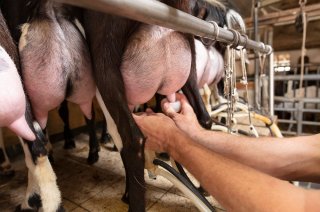
category_news
Composition goat milk microbiota is variable
For a research project by Science Shop of Wageningen University & Research on the initiative of Doetie’s Geiten and the Dutch Rare Breed Survival Trust, milk samples from ten producers were analysed to uncover the variation in types of bacteria in the fresh raw milk. Specifically, the presence of lactic acid-producing bacteria in the raw milk was examined, because a hypothesis is that the these bacteria, desired as starter for cheese manufacturing, are more present in small-scale farms due to their farming system. However, this was not confirmed in the study.
Influence of the production system on the milk microbiome?
Start-ups in the short food supply chain are often small-scale producers who want to contribute to unique food products of animal origin, often with rare Dutch breeds and production methods, while at the same time taking sustainable care of the environment in which they farm. These new entrepreneurs often have knowledge gaps, and this research aimed to help answer the question about what types of bacteria are present in the raw milk of dairy goats.
This exploratory study looked at the diversity of bacteria in raw milk per farm and the variation between farms, specifically the amount of lactic acid-producing bacteria. Fast growth of desired lactic acid-producing bacteria suppresses the growth of spoilage and pathogenic microorganisms. Morning milk samples were taken from the milk glass or milk line at ten farms for total bacteria count and microbiome analysis. Also, a milk tank sample from previous days was taken from six farms that had tank milk.

The results of the milk microbiome samples clearly showed that the samples from the same day are very similar, with a clear “fingerprint” of the farm per sample moment. However, the samples repeated over time showed that the composition of the milk microbiome can change very quickly; the microbiome is really a “snapshot”. The dominant microbial phyla found in goat milk are Firmicutes, Actinobacteria and Proteobacteria, which represent 95% of the milk microbiome.
For a follow up analysis we clustered the farms in regular and non-conventional farms. The non-conventional farms process the milk themselves, have different farm management (many animals from this group can go outside) and are smaller in size (less than 200 goats). No difference in variation in the milk microbiome was found between the clusters, not even for the lactic acid-producing bacteria. We found that there is a lot of variation within the group of non-conventional farms.